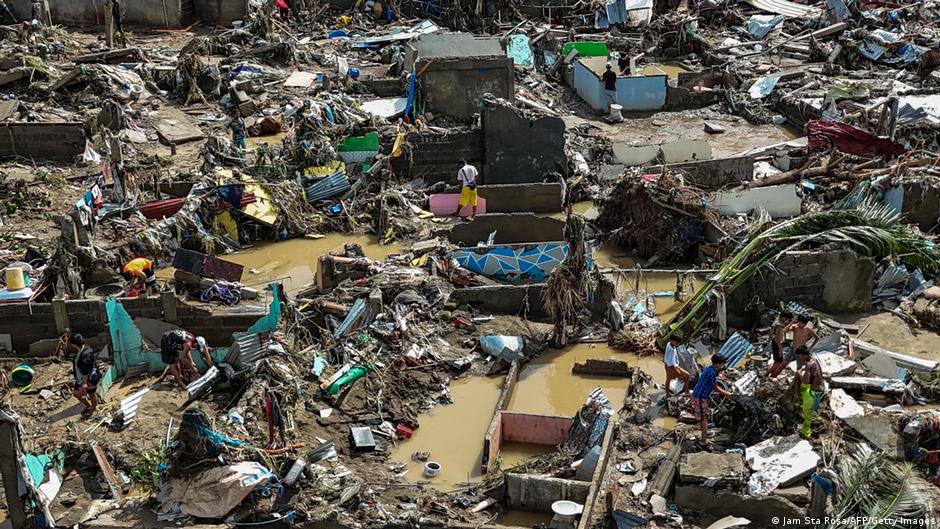
"The Philippines is in for another bout of extreme weather as a major storm moves toward the country's eastern coast, following close on the heels of Typhoon Kalmaegi, which devastated large swathes of the country this week. The new storm, Typhoon Fung-wong, is expected to turn into a super typhoon before it makes landfall on Sunday night or early Monday morning, with the Philippines' weather bureau warning of storm surges of up to five meters (16 feet)."
"Fung-wong, currently carrying maximum sustained winds of 140 kph (87 mph) and gusts of up to 170 kph, has already brought heavy rains and winds to parts of the eastern Philippines. The typhoon spans 1,500 kilometers (932 miles), meaning that it could also affect the densely populated area in and around the capital, Manila. Residents in low-lying and coastal areas have been ordered to evacuate to higher ground and to halt all activities at sea."
"Meanwhile, cleanup and rescue operations are continuing in the center of the Philippines, where Kalmaegi made landfall on Tuesday. In addition to the more than 200 fatalities, nearly 450,000 people were evacuated to shelters, and nearly 400,000 remained in evacuation centers or homes of relatives as of Saturday. President Ferdinand Marcos Jr. on Friday visited the worst-affected areas in the central Cebu province, where 141 people died, mostly in flooding."
Typhoon Fung-wong is forecast to intensify into a super typhoon and make landfall Sunday night or early Monday, with storm surges up to five meters. The storm carries sustained winds of 140 kph and gusts to 170 kph, spans about 1,500 kilometers, and could affect Manila and surrounding densely populated areas. Authorities have ordered evacuations for low-lying and coastal communities and halted sea activities. Typhoon Kalmaegi has left at least 204 dead in the Philippines and killed at least five in Vietnam; it weakened to a tropical depression and moved into Laos and Cambodia. Cleanup and rescue continue, with hundreds of thousands displaced and shelters in use.
Read at www.dw.com
Unable to calculate read time
Collection
[
|
...
]